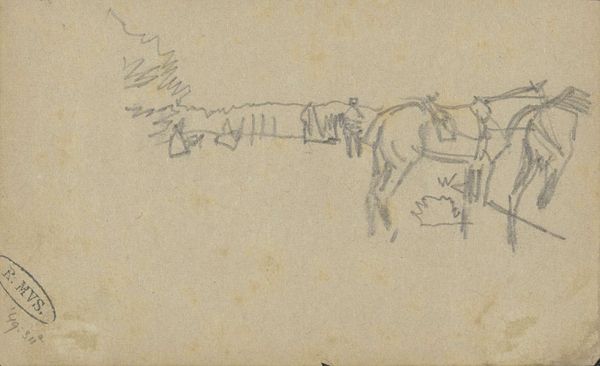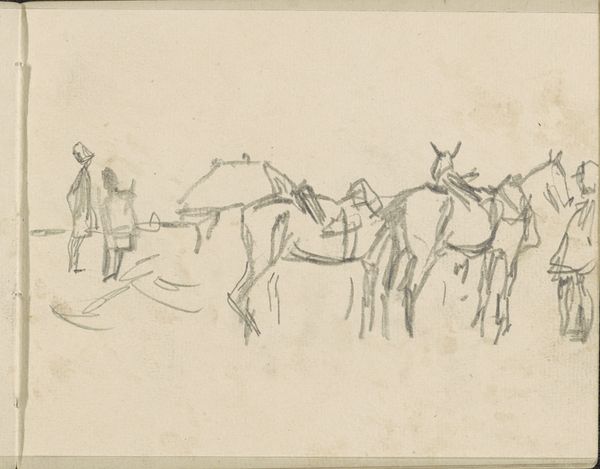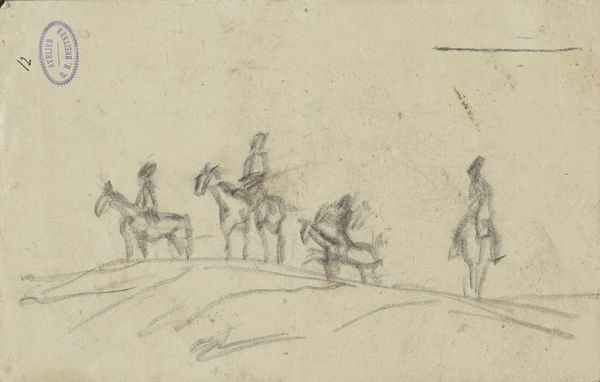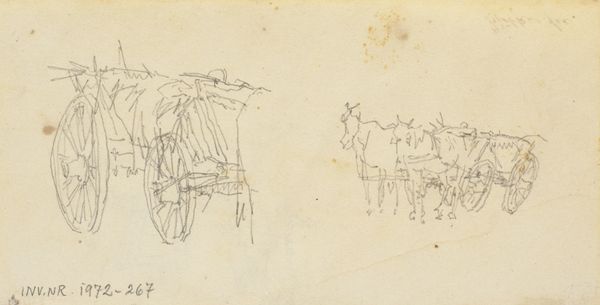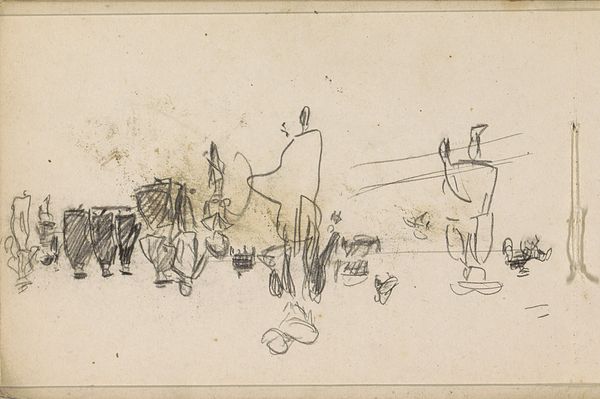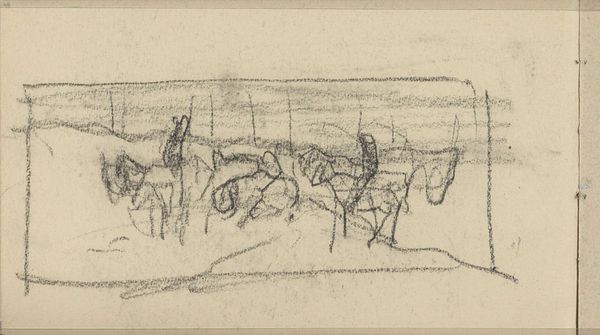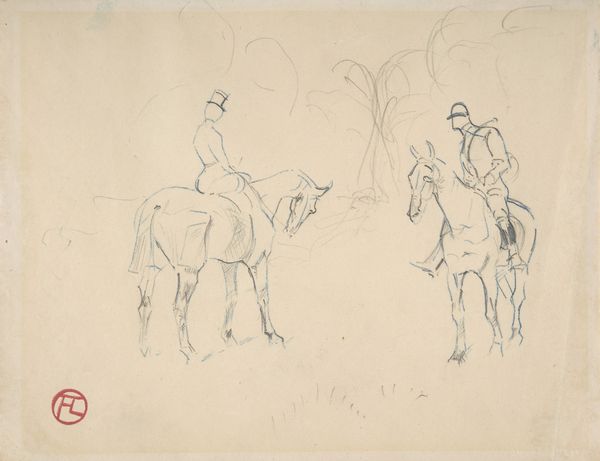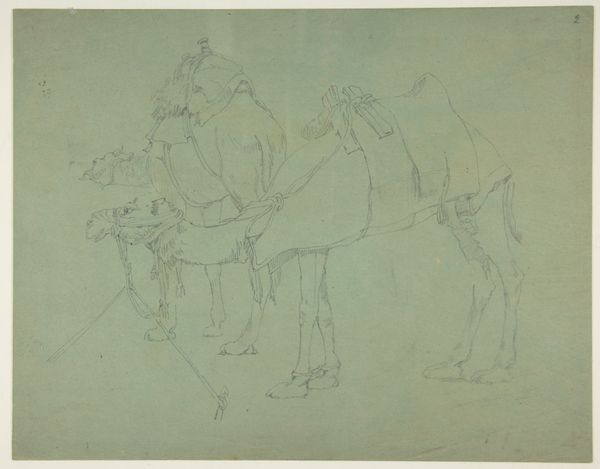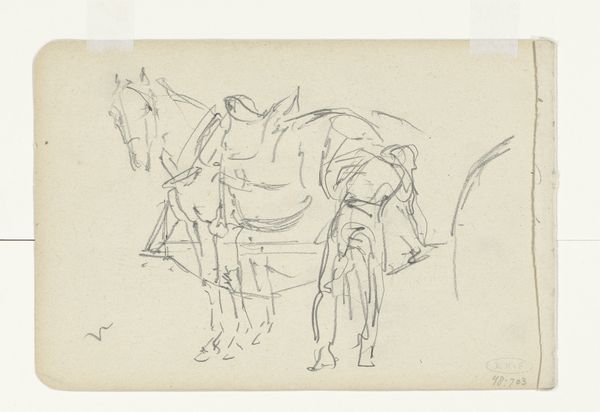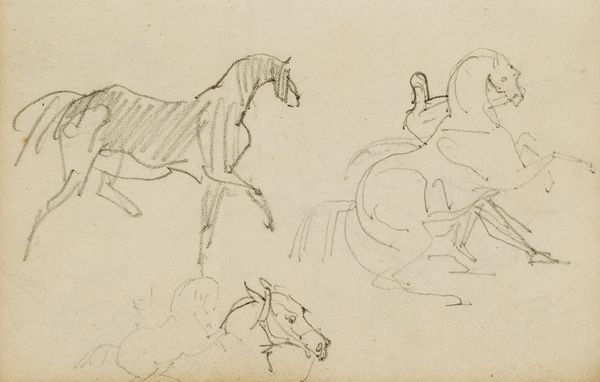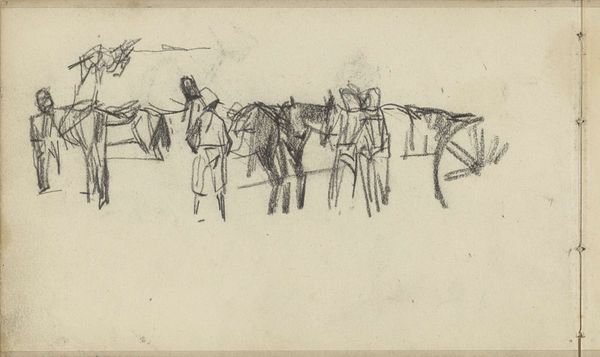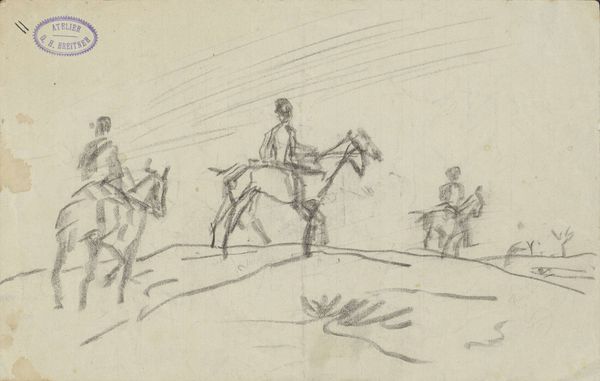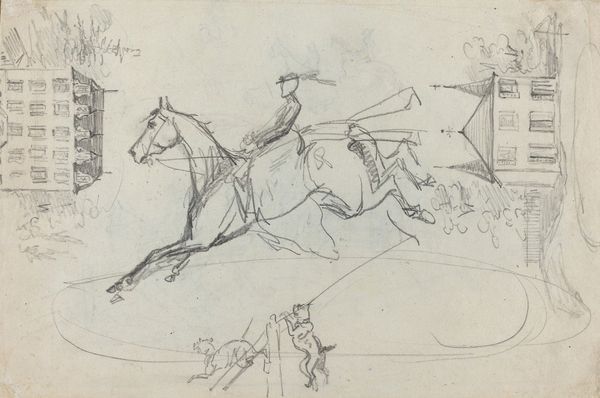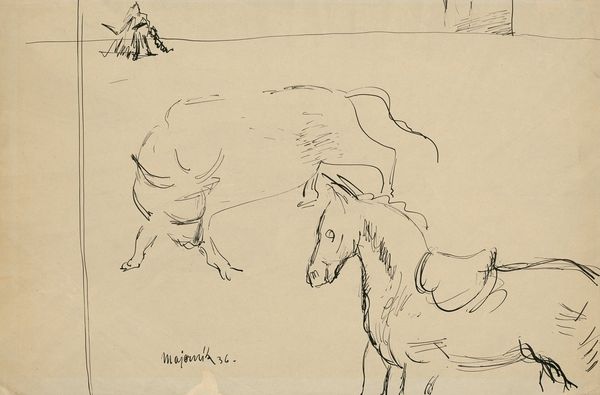
drawing, pencil
#
drawing
#
imaginative character sketch
#
light pencil work
#
quirky sketch
#
sketch book
#
landscape
#
personal sketchbook
#
idea generation sketch
#
sketchwork
#
pencil
#
sketchbook drawing
#
storyboard and sketchbook work
#
sketchbook art
#
realism
Copyright: Public Domain: Artvee
Curator: Winslow Homer created this work titled "Tethered" using pencil in 1864. It seems to be a study from a sketchbook. My first impression is a sense of quiet weariness; the lines are delicate and suggest both simplicity and melancholy. What do you think? Editor: I'm immediately drawn to the horse’s stance, almost a resignation. Horses often represent strength and freedom, but here, the tether and posture speak volumes. It symbolizes constrained potential, which is interesting when considering Homer's era. Curator: Indeed, we must remember that this was sketched during the American Civil War. Consider the various subjugations at play in this setting, like slavery and forced conscription; even labor seemed conscripted towards destruction. How does the drawing engage with themes of forced labor and war's impact? Editor: The landscape is barely suggested, offering a backdrop of potential or promise, perhaps the Union cause, but immediately obstructed by rough fencing that constrains our view and traps the horse. The horse itself becomes an allegorical figure. Is Homer suggesting that noble ideals have become yoked to something grim? Curator: That's fascinating. Perhaps he implies war erodes not only freedom but the ideals that ostensibly motivate it. It would fit into later patterns of disillusionment. Thinking intersectionally, whose freedom and nobility are even being represented here? I can't help but consider how wartime propaganda employed romantic images of service that were never accessible to all, particularly not Black people and other people of color. Editor: The "tether," more than simply a restraint, comes to stand as a multivalent symbol, doesn't it? Perhaps referring to those broken political promises and a society straining under multiple stresses of division. The visual language—the implied weight and constrained form—conveys profound commentary despite the sketch's simplicity. Curator: Agreed. Even the hasty rendering embodies the period's uncertainties and anxieties. It suggests art’s potential for exposing hidden tensions, revealing cultural narratives through implied symbolism, which encourages dialogues even centuries after their creation. Editor: Ultimately, Homer captures not just an image, but a feeling—a lingering sense of things being provisional, laden with unresolved conflicts and questions.
Comments
No comments
Be the first to comment and join the conversation on the ultimate creative platform.
